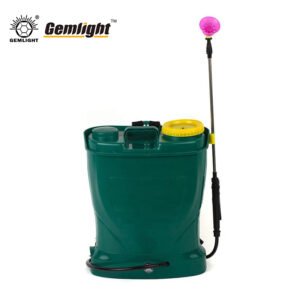1. Understanding the Role of Machete Blades in African Agriculture
In many parts of Africa, the machete blade is more than just a cutting tool—it’s a daily necessity for farming, forestry, and land management. From smallholder farms in Uganda to sugarcane fields in Nigeria, the machete plays a central role in agricultural productivity. Its robust design and versatile use have made it a tool of choice across the continent.
The straight-edged machete blade is typically used for slashing tall grasses, pruning trees, and preparing firewood, while the curved blade excels in harvesting tasks, such as cutting sugarcane or clearing thick brush. The design and performance of the blade significantly impact labor efficiency. For instance, a well-balanced machete with a properly heat-treated blade allows for longer use without fatigue and delivers cleaner, faster cuts.
Durability is a critical factor in African environments, where tools are exposed to hard soil, dry conditions, and frequent use. A low-quality blade may lose its edge quickly or even break under pressure, leading to increased replacement costs and work delays. Therefore, the demand for high-carbon steel machete blades, which offer better edge retention and impact resistance, continues to rise among African users.
For suppliers and distributors targeting African markets, understanding the regional needs—such as blade length preferences, weight balance, and hand grip design—is essential. A well-crafted machete blade tailored for African agricultural tasks is not only a competitive product but also a practical contribution to food production and land management.

2. Comparing Popular Types of Machete Blades for Rugged Use
The African landscape presents unique challenges that require specific types of machete blades to handle efficiently. Understanding the differences between blade styles is essential for professionals and distributors seeking durable solutions for rural and industrial use.
One of the most prominent blade styles used in Africa is the Panga machete, known for its broad, curved blade that delivers powerful chopping force. This type of machete curved blade is widely used across East and Southern Africa for clearing dense vegetation, splitting firewood, and preparing fields. Its distinctive shape concentrates force toward the tip, allowing deeper cuts with less effort.
Another popular type is the Billhook machete, featuring a hook-shaped curved blade designed for pruning and cutting vines. This style is particularly effective in horticulture and cocoa farming regions of West Africa. The Bolo machete, originally from the Philippines, is also appreciated in African settings for its weighted design that improves cutting power.
In contrast, Latin-style machetes have long, straight blades and are often used for lighter vegetation and general-purpose clearing. They are favored in regions where speed and reach are more important than chopping power. For more demanding environments, cane machetes with their sharpened tips and thick spines are ideal for sugarcane harvesting.
Each blade type serves a different function, and selecting the wrong one can hinder productivity and increase operator fatigue. Durability comes not only from the material but also from choosing the appropriate blade style for the task at hand. A factory or supplier that can offer a full range of types of machete blades—matched to specific African applications—will always stay ahead of the market curve.

3. Factory-Direct Machete Curved Blade Options for African Markets
As a professional supplier with a strong manufacturing foundation, our company specializes in offering durable, factory-direct machete blades optimized for African field conditions. We understand the real-world demands of agriculture, forestry, and bush clearing in Africa, which is why we design our machete curved blade series with practicality, longevity, and user safety in mind.
Our Panga machetes are among the most in-demand products across Africa. Manufactured using high-carbon steel, these blades are heat-treated for superior hardness and impact resistance. They feature ergonomic wooden or plastic handles, full tang construction for strength, and optional anti-rust coatings suited for humid or wet working environments.
We also offer Billhook machetes with curved blades tailored for farmers dealing with fruit trees, vines, and sugarcane. These are ideal for precise tasks such as pruning and bundling, especially in markets like Côte d’Ivoire and Ghana. Our Cane machetes, reinforced with thick spines and robust edge geometry, are the perfect match for large-scale sugarcane operations, particularly in Malawi and Mozambique.
Customization is one of our key strengths. We provide OEM and ODM services to accommodate customer branding, specific length requirements, or unique handle preferences. Whether you’re a distributor looking to launch your own line of machete blades or a government contractor sourcing for agricultural development, our team can deliver scalable, consistent solutions.
Moreover, our factory has passed rigorous international certifications (including SGS and ISO), ensuring that every machete curved blade meets the highest standards of quality and safety. With decades of production experience and a deep understanding of African markets, we’re confident in our ability to be your long-term machete supplier.

4. How to Select the Right Machete Blade for Long-Term Performance
Choosing the right machete blade involves more than just picking a style; it’s about matching the blade design and materials to the environmental and task-specific needs of the user. This decision is especially critical in Africa, where machetes are used intensively and often under harsh conditions.
First, evaluate the blade type. If you’re in an area with dense bush or forest, opt for a machete curved blade such as a Panga or Billhook. These deliver powerful, controlled chops and are better suited for uneven terrain. For lighter work, like trimming or grass clearing, straight-edged types of machete blades offer better precision and speed.
Second, consider the steel quality. High-carbon steel remains the best choice for durability and edge retention. Though it may require more maintenance to prevent rust, its performance under tough use is unmatched. For buyers looking for a maintenance-free option, stainless variants may be suitable, though they are generally softer.
Third, handle design matters. Choose full-tang handles made of hardwood or reinforced plastic, especially when long hours of cutting are expected. Grip comfort, slip resistance, and blade balance are key factors that contribute to reduced fatigue and increased safety.
Finally, don’t underestimate manufacturer credibility. Tools built by experienced factories using proper forging and heat treatment techniques last significantly longer than mass-produced alternatives. When evaluating suppliers, request samples and material specifications, and verify production certifications.
For distributors, offering a well-selected range of durable machete blades—both straight and curved—can lead to stronger customer loyalty and repeat orders. For end-users, making the right machete blade choice improves not only task efficiency but also overall safety and satisfaction.




